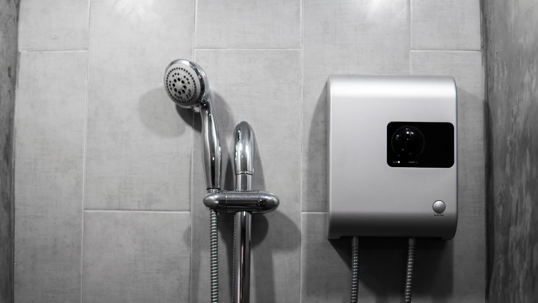Are you tired of waiting for your tank water heater to heat up water or running out of hot water in the middle of a shower? It may be time to consider switching to a tankless water heater. Tankless water heaters are becoming increasingly popular in homes and businesses you can benefit from their energy-efficiency, endless hot water supply, and compact design. Read on to learn more about how tankless water heaters work.
How does a tankless water heater work?
A tankless water heater works by heating water on demand, as it passes through the unit. The unit is typically installed on a wall near the water source, and the hot water is delivered through a pipe. When a hot water tap is turned on, the cold water passes through the unit's heat exchanger, where it is heated by electric elements or a gas burner. This process only happens when you need hot water, making tankless water heaters more energy-efficient than tank water heaters.
Benefits of a tankless water heater
There are several advantages of a tankless water heater, including:
- Endless hot water supply: Tankless water heaters heat water on demand, so you won't run out of hot water, no matter how many people are using it.
- Space-saving design: Tankless water heaters are compact and can be installed on a wall, saving valuable floor space.
- Energy-efficient: Since tankless water heaters only heat water when you need it, they can reduce energy costs by up to 30%.
- Lower maintenance: Since there is no tank to store hot water, there is less risk of leaks or water damage.
Types of tankless water heaters
There are two types of tankless water heaters: electric and gas. Electric tankless water heaters are more energy-efficient than traditional electric tank water heaters but may not be powerful enough to supply hot water to multiple outlets at once. Gas tankless water heaters require a gas line and are more expensive to install, but can supply more hot water at once than electric models.
Installation of a tankless water heater
The installation of a tankless water heater should always be done by a professional plumber. The unit needs electrical or gas connections, as well as water and vent pipes. Additionally, proper sizing is critical to ensure that the unit can meet your hot water demands. Your plumber will need to determine the unit's flow rate, temperature rise, and other variables to properly size the unit for your needs.
Operating a tankless water heater
Once your tankless water heater is installed, operating it is simple. Turn on the hot water tap, and the unit will automatically heat the water as it passes through. Some units may come with a remote control or mobile app that allows you to change the temperature or turn the unit on and off from your phone.
Conclusion
Investing in a tankless water heater is a smart decision for any home or business looking to save energy costs and provide an endless supply of hot water. By understanding how these units work and the installation process, you can make an informed choice about whether to switch to a tankless water heater. Remember that professional installation and proper sizing are key to ensuring that your tankless water heater works efficiently and meets your hot water demand. Contact a professional plumber to learn more and get started on your tankless water heater installation today!

